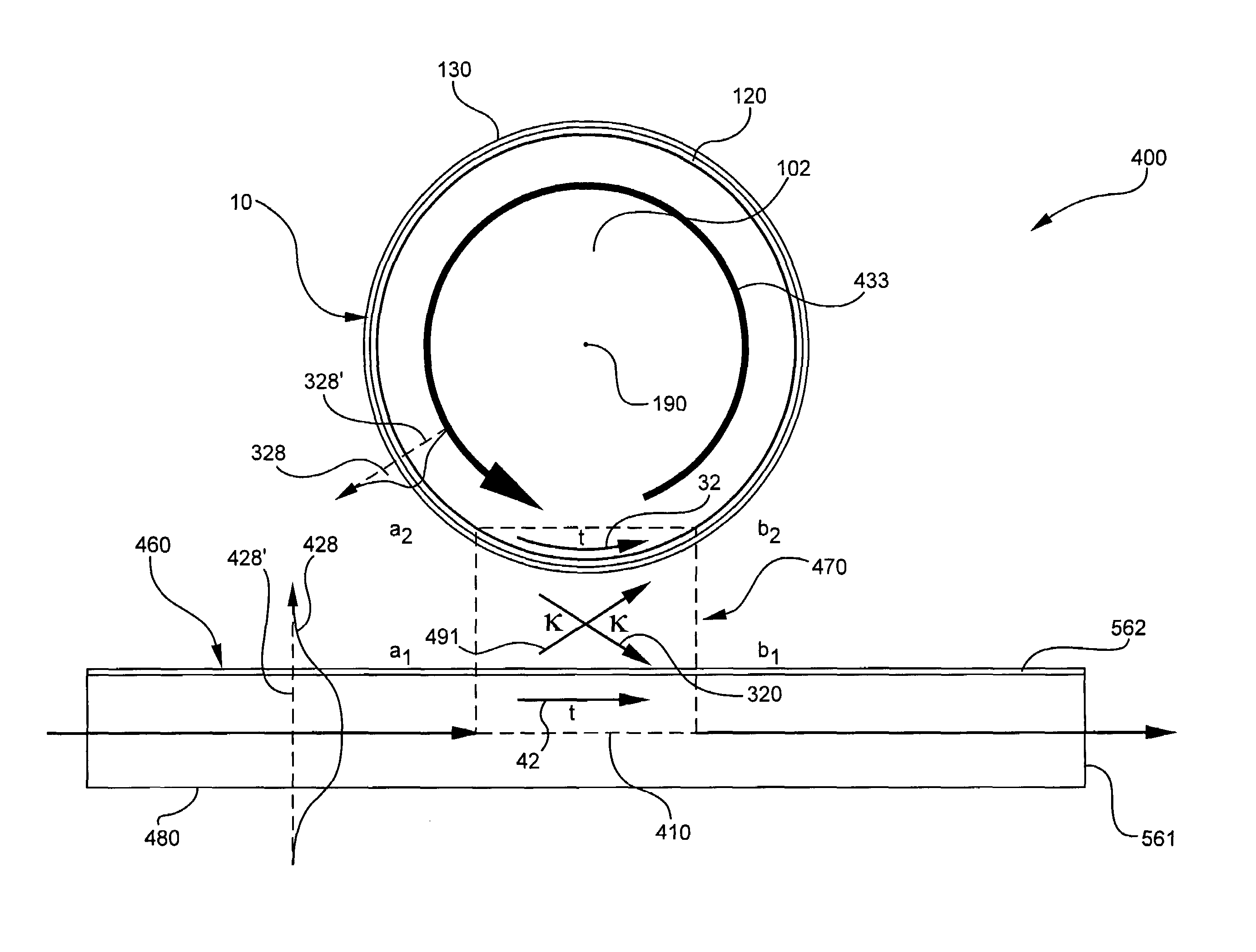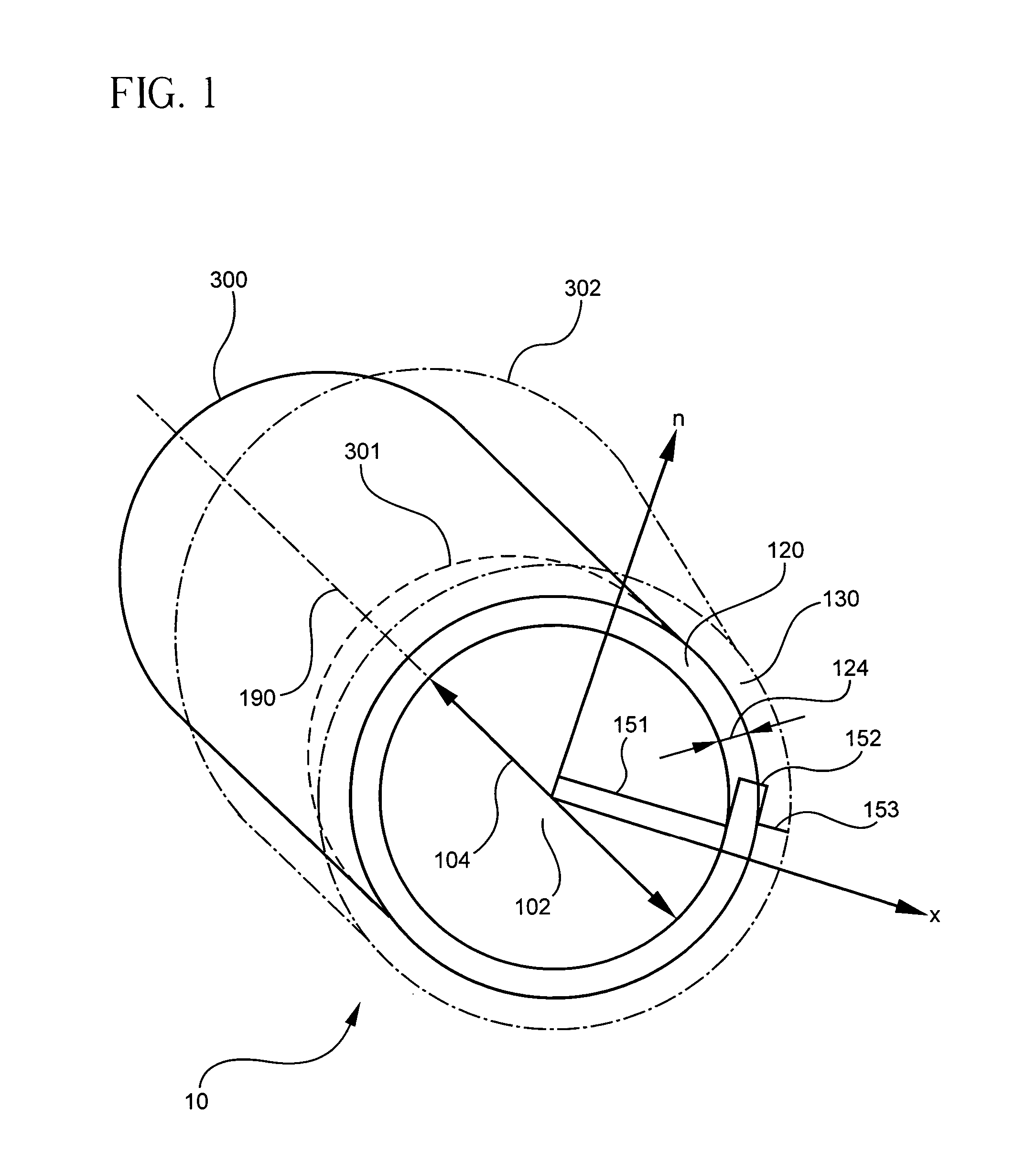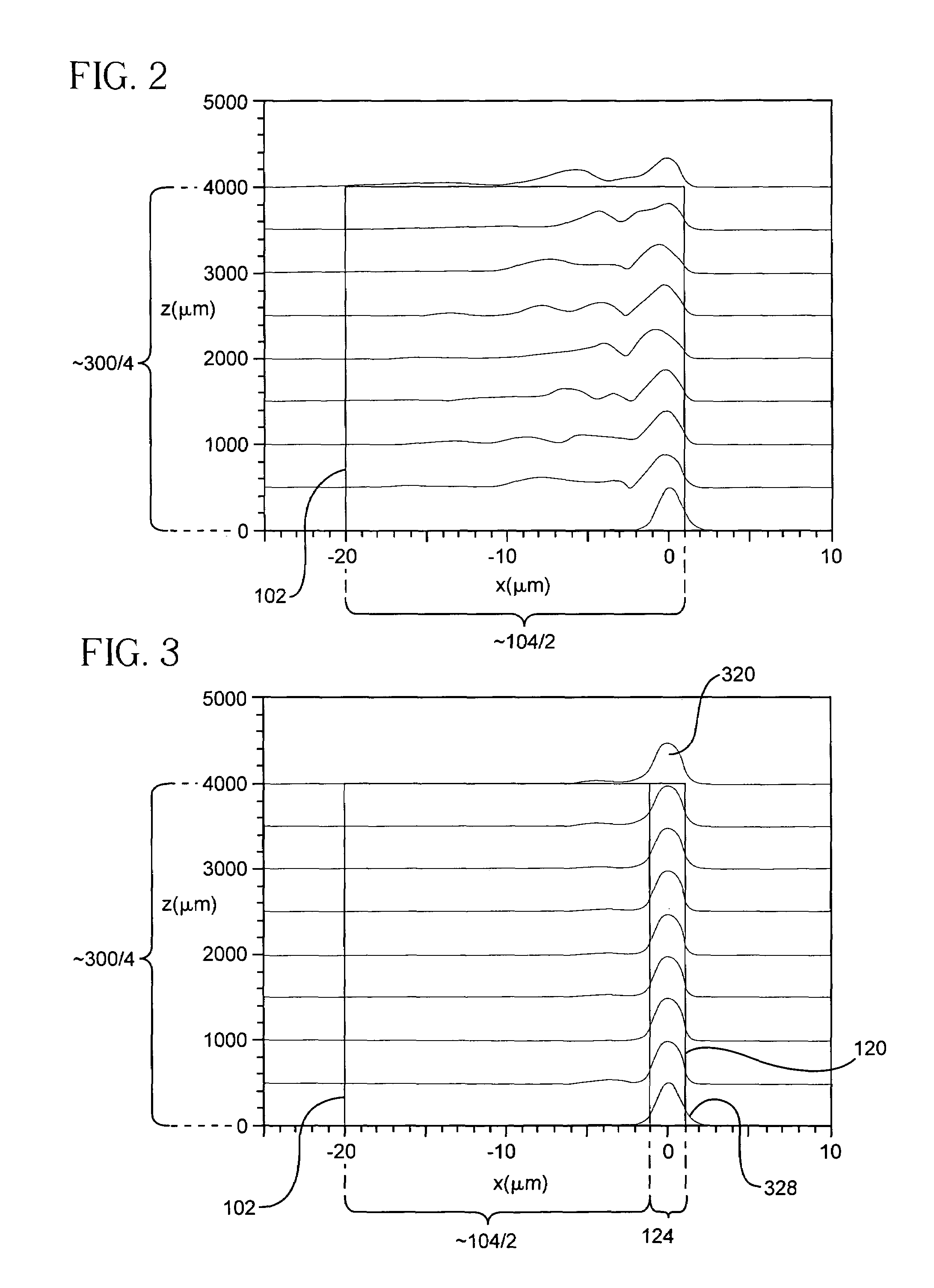Transverse closed-loop resonator
a closed-loop resonator and transverse technology, applied in the field of optical fiber couplers, can solve the problems of low-loss waveguides, many difficulties, complex optimization, etc., and achieve the effect of high application specificity and complicated optimization
- Summary
- Abstract
- Description
- Claims
- Application Information
AI Technical Summary
Benefits of technology
Problems solved by technology
Method used
Image
Examples
Embodiment Construction
[0038]Reference will now be made in detail to the present preferred embodiments of the invention, examples of which are illustrated in the accompanying drawings. Whenever possible, the same reference numerals will be used throughout the drawings to refer to the same or like parts. One embodiment of the transverse closed-loop fiber resonator of the present invention is shown in FIG. 1, and is designated generally throughout by the reference numeral 10.
[0039]A transverse closed-loop fiber resonator 10 includes an inner cladding 102 having a surface 300 peripherally forming a closed-loop shape for confining light to the surface 300. The inner cladding has a first diameter thickness 104 and a first index of refraction profile in a cross-sectional portion of the transverse closed-loop fiber resonator 10. A ringed-core 120 corresponding to the closed-loop shape is disposed on the corresponding surface of the inner cladding 102. The ringed-core 120 has a second thickness 124 of material th...
PUM
 Login to View More
Login to View More Abstract
Description
Claims
Application Information
 Login to View More
Login to View More - R&D
- Intellectual Property
- Life Sciences
- Materials
- Tech Scout
- Unparalleled Data Quality
- Higher Quality Content
- 60% Fewer Hallucinations
Browse by: Latest US Patents, China's latest patents, Technical Efficacy Thesaurus, Application Domain, Technology Topic, Popular Technical Reports.
© 2025 PatSnap. All rights reserved.Legal|Privacy policy|Modern Slavery Act Transparency Statement|Sitemap|About US| Contact US: help@patsnap.com



